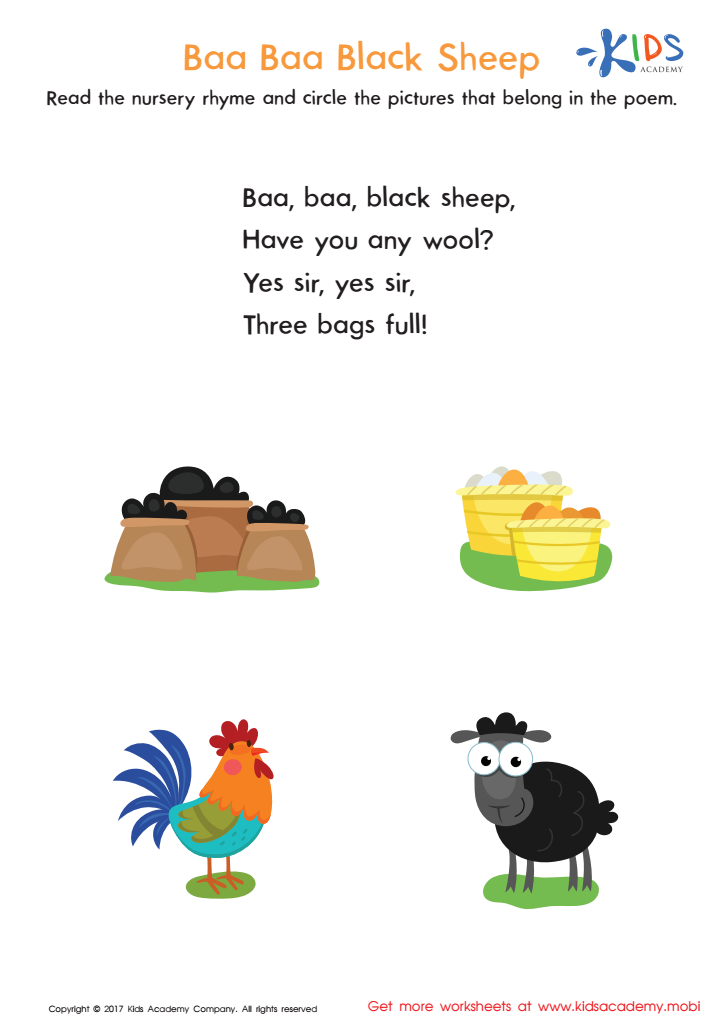Rhyme recognition Songs Worksheets for Ages 4-5
3 filtered results
-
From - To
Our "Rhyme Recognition Songs Worksheets for Ages 4-5" blend fun and learning to help young children develop crucial pre-reading skills. These engaging worksheets involve charming songs that introduce kids to the concept of rhyming words in an enjoyable manner. Sing along with your child as they discover patterns in language through beloved nursery rhymes and playful melodies. Each worksheet is designed to boost phonemic awareness, enhancing their ability to recognize rhymes, which is vital for future reading success. Perfect for home or classroom use, these worksheets provide effective and delightful practice for budding readers. Let's make learning a joyous adventure!


Baa Baa Black Sheep Printable


Nursery Rhymes: Twinkle Little Star Worksheet


Nursery Rhyme Match–Up Worksheet
Rhyme recognition songs are invaluable tools for parents and teachers of children aged 4-5 because they support early literacy and language development in a fun and engaging manner. At this pivotal age, children are rapidly acquiring vocabulary and foundational language skills. Rhyming helps children recognize patterns within language, which is a critical step in phonological awareness—an essential precursor to reading.
Firstly, rhyme recognition improves auditory discrimination as children learn to identify and distinguish between different sounds. This auditory skill is a building block for understanding how sounds combine to form words. Moreover, rhythmic and rhyming elements solidify memory through repetition, making it easier for young learners to recall words and phrases. Exposure to rhymes enhances vocabulary acquisition and context understanding, providing a natural segue into phonics.
Secondly, rhyme songs foster emotional and social development. Singing together in a group setting promotes cooperation, turn-taking, and active listening. These activities can serve as confidence boosters and create an inclusive atmosphere for children.
Lastly, many rhyming songs include actions and props, building gross motor skills and hand-eye coordination. By integrating rhyme recognition songs into daily routines, parents and teachers give children a multisensory learning experience that blends cognitive, social, and physical development seamlessly. This holistic approach sets a strong foundation for future educational success.

 Assign to My Students
Assign to My Students
















